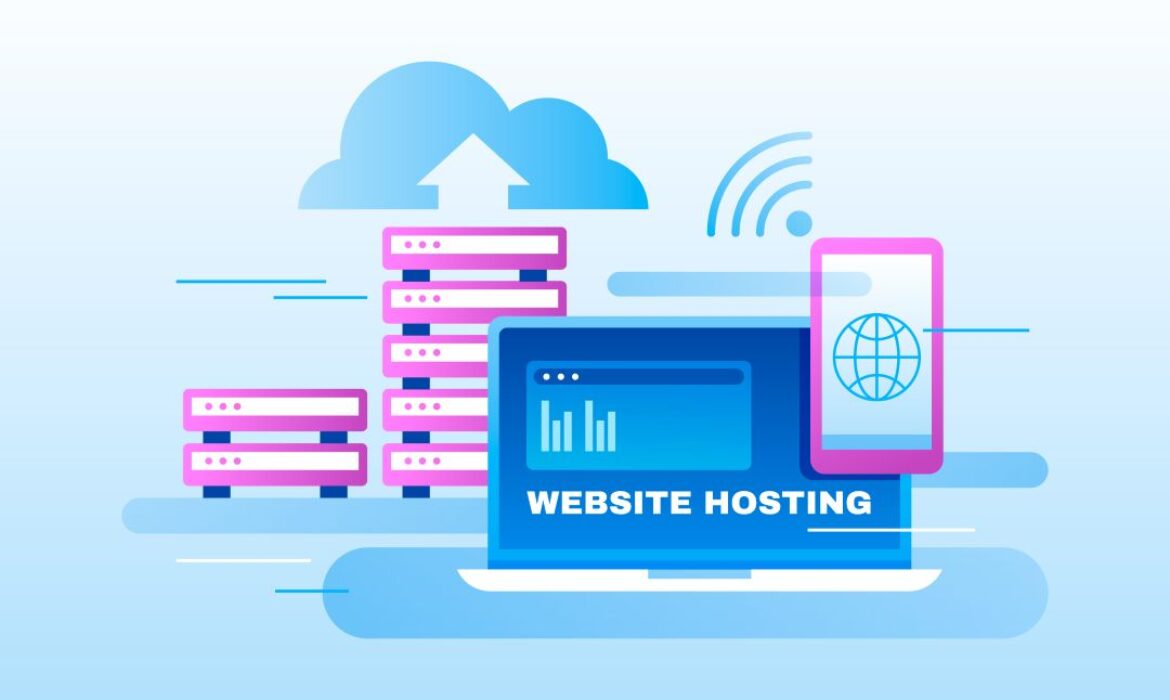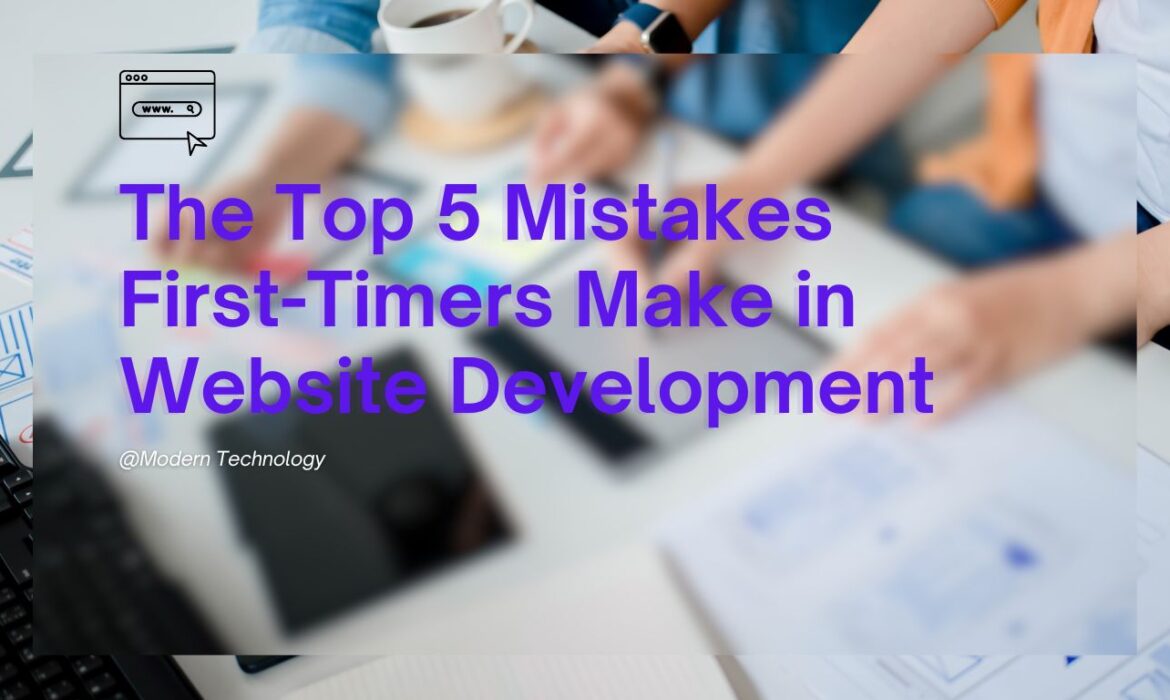Why User Experience Matters More Than Ever in 2025
In the ever-evolving digital landscape, user experience (UX) has become the cornerstone of successful application development. In 2025, where competition is fiercer than ever, creating seamless and engaging experiences is no longer optional – it’s essential. This beginner’s guide will help you understand why UX holds such importance and how it impacts your digital products.

A Beginner-Friendly Definition
User experience refers to the overall experience a user has while interacting with a digital product, such as a mobile app or website. It includes factors like usability, design, accessibility, and emotional engagement.
Why It Matters
A good UX ensures that users can achieve their goals effortlessly, whether it’s completing a purchase, finding information, or simply enjoying an app. In application development services in Indore and beyond, businesses that prioritize UX are more likely to retain customers and foster loyalty.
Rising Expectations of Users
As technology becomes more advanced, users expect intuitive and personalized experiences. A poorly designed app with a confusing interface can lead to frustration and high churn rates.
The Competitive Edge
With countless apps available for download, a strong UX is often what sets a successful product apart. Businesses offering application development services in Indore are increasingly focusing on UX to deliver superior products that outshine competitors.
Boosts Customer Retention
Apps with excellent UX keep users coming back. A simple, clean design and smooth functionality make users feel valued and understood.
Increases Revenue
Better UX directly impacts conversion rates. For instance, reducing friction in checkout processes can lead to higher sales.
Reduces Development Costs
Investing in UX during the development phase can save money in the long run by preventing costly redesigns and minimizing customer complaints.
Usability
An app should be easy to navigate, with clear instructions and minimal learning curves. Prioritizing usability is a common focus for application development services in Indore.
Accessibility
Ensure your app is usable by everyone, including people with disabilities. This means incorporating features like voice commands and customizable text sizes.
Visual Design
An appealing visual design grabs attention and builds trust. Consistent branding, color schemes, and layouts enhance the overall user experience.
Performance
No matter how beautiful an app is, it won’t succeed if it’s slow or crashes frequently. Optimizing performance is critical.
Conduct User Research
Start by understanding your target audience’s needs, preferences, and pain points. Use surveys, interviews, and analytics tools to gather insights.
Test Early and Often
Incorporate usability testing throughout the development process. Early feedback helps you address issues before they become major problems.
Partner with Experts
Work with professionals offering application development services in Indore who have a proven track record of delivering exceptional UX.
Stay Updated on Trends
Keep an eye on emerging UX trends like AI-powered personalization, dark mode designs, and augmented reality integration.
1. Why is UX more critical in 2025?
In 2025, users have higher expectations and countless alternatives. A strong UX ensures you stand out and retain your audience.
2. How can businesses improve UX?
Businesses can improve UX by conducting user research, testing prototypes, and working with skilled developers who prioritize user-centered design.
3. What tools are used for enhancing UX?
Popular tools include Figma for design, Hotjar for user behavior analysis, and Google Analytics for performance tracking.
SEO in 2025: What’s Working and What’s Dead?
Search Engine Optimization (SEO) has always been a dynamic field. As we approach 2025, it is crucial to understand what strategies remain effective and which ones have become obsolete. This beginner’s guide will help you navigate the evolving landscape of SEO, with actionable insights and tips to enhance your online presence. If you’re seeking professional help, SEO Services in Indore can provide tailored solutions for your needs.
Before diving into what works and what doesn’t, let’s revisit the fundamentals of SEO. In 2025, SEO remains focused on:
- On-Page Optimization: This includes high-quality content, optimized titles, and strategic use of keywords.
- Off-Page Optimization: Backlinks and brand mentions still play a vital role.
- Technical SEO: Site speed, mobile-friendliness, and structured data are non-negotiable.
Why It Matters: These foundational elements ensure that your website is accessible, relevant, and trustworthy for both users and search engines.

Focus on High-Quality Content
Search engines are prioritizing content that is relevant, engaging, and valuable to users. In 2025, Google’s algorithms are more adept at recognizing well-written, in-depth articles. Use:
- Long-form Content: Articles over 1,500 words tend to perform better.
- Multimedia: Videos, images, and infographics enhance user experience.
Pro Tip: Regularly update your content to keep it fresh and relevant.
User Experience (UX) Optimization
SEO is now closely tied to user experience. Websites that load quickly, are mobile-friendly, and offer seamless navigation rank higher.
- Core Web Vitals: Focus on metrics like Largest Contentful Paint (LCP) and First Input Delay (FID).
- Mobile-First Design: Ensure your site performs well on all devices.
Voice Search Optimization
With the rise of smart devices, voice search continues to grow. Optimize your content for conversational queries by using natural language and long-tail keywords.
Example: Instead of “SEO tips,” target phrases like “What are the best SEO tips for small businesses?”
Keyword Stuffing
Gone are the days when cramming keywords into your content would boost rankings. In 2025, this outdated practice will hurt your SEO efforts, leading to penalties from search engines.
Generic Link Building
Low-quality or irrelevant backlinks no longer add value. Search engines now favor:
- High-authority backlinks
- Natural and contextually relevant links
Duplicate Content
Publishing duplicate or plagiarized content will harm your rankings. Focus on creating original, insightful articles.

Leverage AI and Automation
Artificial intelligence tools can analyze trends, suggest keywords, and even optimize content for search intent. Use AI for:
- Content Creation: Tools like ChatGPT can help draft ideas.
- Performance Analysis: Identify what’s working through data-driven insights.
Invest in Local SEO
For businesses like SEO Services in Indore, local SEO is more important than ever. Optimize for:
- Google My Business: Keep your profile updated.
- Localized Keywords: Include phrases like “SEO services in Indore” in your content.
Embrace Video SEO
YouTube remains a dominant platform. Ensure your videos are:
- Optimized with Keywords: Use relevant titles and descriptions.
- Accompanied by Transcripts: Improve accessibility and ranking.
Stay Updated
SEO algorithms are constantly evolving. Keep track of industry updates through blogs, webinars, and online courses.
Focus on E-A-T (Expertise, Authority, Trustworthiness)
Google values content that demonstrates expertise, authority, and trustworthiness. Build your brand’s credibility by:
- Earning High-Quality Mentions: Get cited by authoritative sources.
- Publishing Case Studies and Reviews: Showcase your expertise.
Measure and Adjust
Use tools like Google Analytics and Search Console to monitor your performance. Adjust your strategy based on the data.
Q1. Is SEO still relevant in 2025?
Absolutely! SEO remains essential for driving organic traffic and improving online visibility.
Q2. How can small businesses benefit from local SEO?
Local SEO helps small businesses rank for location-specific searches, making it easier for nearby customers to find them.
Q3. Are backlinks still important for SEO in 2025?
Yes, but the focus is on high-quality, relevant backlinks from trusted sources.
Q4. What role does social media play in SEO?
While not a direct ranking factor, social media helps amplify content and drive traffic to your site.
Q5. Can I handle SEO on my own?
You can, but partnering with professionals like SEO Services in Indore can save time and yield better results.
How Digital Transformation Drives Business Success in 2025
Digital transformation has become a buzzword for modern businesses. In 2025, it is more relevant than ever, offering a roadmap to efficiency, customer satisfaction, and growth. But what exactly is digital transformation, and how can it drive success for your business? This beginner-friendly guide explains everything you need to know.

Digital transformation refers to the adoption of digital technologies to improve processes, deliver value to customers, and stay competitive. From automating workflows to leveraging data analytics, it encompasses a wide range of strategies.
In 2025, companies in various sectors have embraced digital tools to streamline operations. For example, cloud computing has made remote collaboration seamless, while AI-driven analytics provide insights that were once impossible to uncover. Transitioning to digital isn’t just about technology; it’s about creating a culture of adaptability and innovation.
Staying Competitive
The business world is evolving at an unprecedented rate. Companies that fail to adapt risk being left behind. Digital transformation helps businesses remain agile, enabling them to respond quickly to market changes and customer demands.
Enhancing Customer Experience
Today’s customers expect personalized experiences. Businesses leveraging digital marketing services in Indore, for example, use data analytics and social media platforms to connect with their audience in meaningful ways. A well-executed digital transformation strategy ensures that every customer interaction is seamless and engaging.
Boosting Efficiency
Automation is a cornerstone of digital transformation. Tasks that once took hours can now be completed in minutes, freeing up employees to focus on strategic initiatives. This efficiency reduces costs and boosts productivity.
Cloud Computing
Cloud services offer flexibility and scalability. Businesses can store data, host applications, and enable remote work without the need for expensive infrastructure. In 2025, companies worldwide are leveraging cloud solutions to stay agile.
Data Analytics
Data is the new oil, and analytics is the engine that drives it. By analyzing customer behaviors and market trends, businesses can make data-driven decisions. This leads to improved strategies and higher ROI.
Digital Marketing
Digital marketing has redefined how businesses reach their customers. Agencies offering digital marketing services in Indore are helping local and global businesses build their online presence, attract leads, and convert them into loyal customers.
Cybersecurity
As businesses go digital, protecting sensitive data becomes paramount. Robust cybersecurity measures ensure trust and compliance, preventing costly breaches.
Step 1: Assess Your Current State
Understand where your business stands in terms of digital maturity. Identify gaps in your technology, processes, and culture.
Step 2: Set Clear Goals
Define what success looks like. Do you want to enhance customer satisfaction, improve operational efficiency, or expand your market reach?
Step 3: Invest in the Right Tools
Whether it’s CRM software, AI-driven analytics, or digital marketing services in Indore, choose tools that align with your goals.
Step 4: Train Your Team
Digital transformation is as much about people as it is about technology. Ensure your employees are equipped with the skills they need to thrive in a digital environment.
Step 5: Monitor and Optimize
Digital transformation is an ongoing process. Regularly review your strategies, gather feedback, and make adjustments to stay ahead.
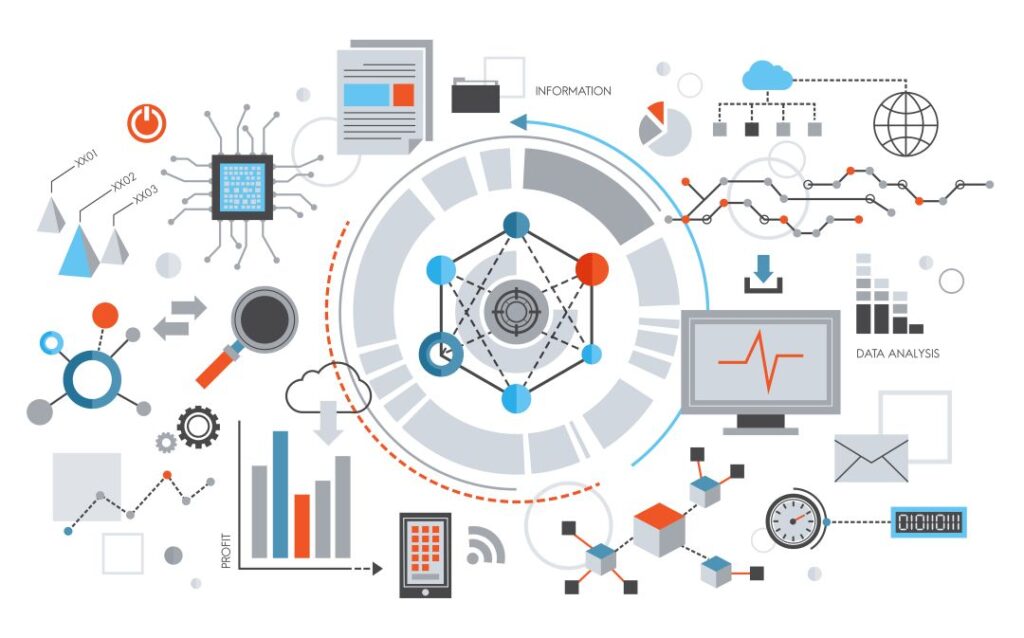
E-commerce Revolution
Retailers embracing digital transformation have seen significant growth. By integrating AI chatbots, predictive analytics, and personalized marketing, they’ve enhanced customer experience and boosted sales.
Local Businesses Going Global
With the help of digital marketing services in Indore, small businesses have reached global audiences. From optimizing websites for search engines to creating engaging social media campaigns, these businesses are thriving.
Healthcare Innovation
Digital transformation has revolutionized healthcare. Telemedicine, wearable devices, and AI-powered diagnostics have made healthcare more accessible and efficient.
What are the main challenges of digital transformation?
The primary challenges include resistance to change, lack of skilled workforce, and high initial costs. However, these can be mitigated with proper planning and training.
How long does digital transformation take?
The timeline varies based on the organization’s size and goals. It’s an ongoing process that evolves with technological advancements.
Why should small businesses consider digital transformation?
Digital transformation levels the playing field, enabling small businesses to compete with larger enterprises by improving efficiency and customer engagement.
Static vs. Dynamic Websites: Which One Suits Your Business?

When building your online presence, choosing the right type of website can make a world of difference. Understanding the differences between static and dynamic websites will help you make an informed decision that aligns with your business goals. Let’s dive into this beginner-friendly guide to explore the features, advantages, and scenarios where each type excels.
Definition and Characteristics
Static websites are made up of fixed HTML, CSS, and sometimes JavaScript files. Each page exists as an independent file, meaning the content remains the same unless manually updated by a developer.
Advantages of Static Websites
- Simplicity: Static websites are straightforward to create, making them perfect for small businesses or individuals with minimal technical expertise.
- Speed: Since the content is pre-rendered, static websites load faster compared to dynamic ones.
- Cost-Effective: Building and hosting static websites is generally less expensive, as they require fewer resources and no backend infrastructure.
- Security: Without server-side processes, static websites are less vulnerable to hacking.
When to Choose Static Websites
Static websites are ideal for businesses with minimal content updates, such as:
- Portfolio websites
- Informational websites
- Landing pages for campaigns
Definition and Characteristics
Dynamic websites generate content dynamically using server-side programming languages like PHP, Python, or JavaScript (Node.js). These websites use databases to fetch and display content based on user interactions.
Advantages of Dynamic Websites
- Interactive Features: Dynamic websites offer interactive elements, such as user accounts, forums, and e-commerce functionalities.
- Content Management: They integrate with Content Management Systems (CMS) like WordPress, making it easier to update and manage content.
- Scalability: Dynamic websites are more scalable, accommodating the growing needs of businesses.
When to Choose Dynamic Websites
Dynamic websites are suitable for businesses that require frequent content updates or complex functionalities, such as:
- E-commerce platforms
- News websites
- Membership-based sites
1. Content Updates
Static websites require manual updates, whereas dynamic websites allow you to update content easily through a CMS.
2. Cost and Maintenance
Static websites are more budget-friendly initially but may incur additional costs for updates. Dynamic websites, while more expensive upfront, offer long-term flexibility and ease of maintenance.
3. Performance
Static websites load faster because they don’t rely on server-side processing. However, modern website development solutions, such as caching and Content Delivery Networks (CDNs), can significantly improve the performance of dynamic websites.
4. Security
Static websites are inherently secure as they lack server-side logic. Dynamic websites require more security measures to protect against vulnerabilities like SQL injection.
With advancements in technology, the gap between static and dynamic websites has narrowed. Solutions like static site generators (e.g., Gatsby, Jekyll) and headless CMS platforms combine the simplicity of static websites with the flexibility of dynamic ones.
Benefits of These Hybrid Solutions
- Faster Loading Speeds: Using static site generators ensures fast page load times.
- Content Management Flexibility: Headless CMS systems allow for seamless content updates without sacrificing performance.
- Improved SEO: Optimized loading speeds and clean code structures improve search engine rankings.

1. Assess Your Goals
Consider your business objectives and how frequently you’ll update your website. If you plan to grow your content or need advanced features, a dynamic website is a better choice.
2. Budget and Resources
Static websites are cost-effective for smaller budgets. If you can invest in a CMS or custom features, a dynamic website offers more scalability.
3. User Experience
Think about the experience you want to provide to your audience. Interactive and personalized experiences typically require dynamic functionalities.
What Is the Difference Between Static and Dynamic Websites?
Static websites are fixed and display the same content for every user, while dynamic websites generate content based on user interactions.
Can I Upgrade a Static Website to a Dynamic One?
Yes, it’s possible, but it requires rebuilding the site with a dynamic framework and integrating a database.
Are Static Websites Outdated?
Not at all! Static websites are still relevant, especially with modern development tools like static site generators and CDNs.
5 Simple Ways to Make Your Website Load Faster
In today’s fast-paced digital world, website loading speed is crucial. A slow-loading site can drive users away, affecting both your traffic and conversions. If you want to provide an exceptional user experience and improve your website’s performance, here are five simple strategies to speed things up. Whether you’re using professional Web Design and Development Services or managing your site independently, these tips will help.

Resize and Compress for Faster Loading
Images play a significant role in a website’s visual appeal, but large, unoptimized images can slow down loading times. To avoid this:
- Resize Images: Use dimensions that fit your website’s design. Avoid uploading oversized images and then scaling them down using HTML or CSS.
- Compress Images: Tools like TinyPNG or ImageOptim can significantly reduce file sizes without noticeable quality loss.
- Choose the Right Format: Use JPEGs for photos and PNGs for graphics with transparent backgrounds.
By taking these steps, you’ll ensure your images look great while enhancing website performance.
Reduce the Number of Resources Needed
Every element on your webpage—images, stylesheets, scripts—requires an HTTP request. The more requests your site makes, the slower it will load. Here’s how to minimize them:
- Combine Files: Merge CSS and JavaScript files to reduce the number of requests.
- Use CSS Sprites: Combine multiple images into one file and display only the relevant parts.
- Enable Browser Caching: Let returning visitors load cached versions of your site’s resources.
Reducing HTTP requests is a straightforward way to improve loading speeds, especially for websites with heavy content.
Distribute Content Across the Globe
A CDN stores your website’s content on servers worldwide, delivering it from the server closest to the user. This reduces latency and speeds up loading times. Major benefits include:
- Faster Load Times: Especially for international users.
- Reduced Server Load: By distributing traffic across multiple servers.
- Improved Reliability: Your site remains accessible even during traffic spikes.
Using a CDN is particularly beneficial for businesses relying on Web Design and Development Services to cater to a global audience.
Streamline HTML, CSS, and JavaScript
Unnecessary lines of code can bloat your website and slow it down. To optimize your code:
- Minify Code: Remove spaces, comments, and redundant code using tools like Minify or UglifyJS.
- Use Asynchronous Loading: Load JavaScript files asynchronously so they don’t block the rendering of other elements.
- Eliminate Render-Blocking Resources: Defer loading of non-critical CSS and scripts.
Well-optimized code ensures your website runs efficiently without compromising functionality.
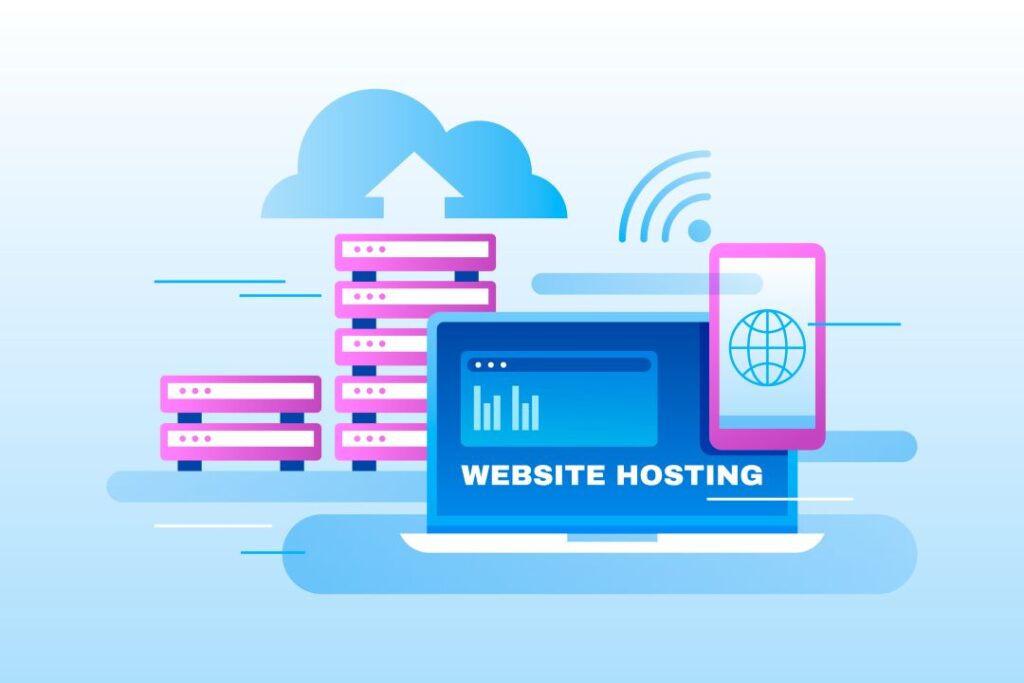
The Foundation of Website Speed
Your hosting provider has a significant impact on your site’s performance. When selecting a hosting service, consider:
- Server Response Time: Choose a host with fast servers.
- Scalability: Opt for scalable hosting to handle increased traffic.
- Hosting Type: VPS or dedicated hosting is generally faster than shared hosting.
If you’re working with Web Design and Development Services, consult their recommendations for reliable hosting providers to match your website’s needs.
Website speed affects user experience, SEO rankings, and conversion rates. Faster websites retain more users and perform better in search engine results.
Use tools like Google PageSpeed Insights, GTmetrix, or Pingdom to analyze your website’s performance and get improvement suggestions.
Yes! Simple steps like optimizing images, choosing fast hosting, and enabling caching can significantly improve speed without advanced knowledge.
Common Mistakes in Mobile Game Design and How to Fix Them
Mobile games have revolutionized the gaming industry, captivating audiences worldwide. However, crafting a successful mobile game is no easy feat. Poor design choices can lead to frustrated players, low ratings, and even failure. Fortunately, understanding common mistakes and how to fix them can elevate your game from forgettable to fantastic.
Whether you’re an indie developer or using professional game development services in India, avoiding these pitfalls is crucial for success.

The Mistake:
Many developers focus on visuals and gameplay mechanics but overlook UX. A cluttered interface, confusing navigation, or excessive ads can turn players away.
How to Fix It:
Start with user testing during early development. Gather feedback on usability and address pain points immediately. Keep your interface intuitive, ensuring that buttons, menus, and gameplay elements are easy to understand and navigate.
Transitioning to a smoother, user-centric design enhances engagement and retention, making your game more appealing.
The Mistake:
While depth and complexity can make games interesting, many mobile games overwhelm players with too many mechanics, tutorials, or objectives right from the start.
How to Fix It:
Simplify your core mechanics. Introduce features gradually through levels or progression systems. This allows players to learn at a comfortable pace without feeling bombarded.
For example, start with a simple goal and introduce advanced mechanics once the player is familiar with the basics. This keeps the game challenging but not daunting.
The Mistake:
Ignoring hardware limitations or designing without cross-platform optimization can lead to laggy gameplay, crashes, or incompatibility issues.
How to Fix It:
Test your game on a wide range of devices to ensure compatibility. Optimize graphics and performance for both high-end and low-end devices. Using cloud-based solutions or outsourcing to game development services in India can help ensure thorough testing and optimization.
Furthermore, use scalable assets and adaptive resolutions to maintain a polished experience regardless of screen size or hardware capabilities.
The Mistake:
Developers often release games without considering feedback, assuming their vision is perfect. This can lead to unmet player expectations and low retention rates.
How to Fix It:
Actively seek and incorporate feedback from beta testers and early users. Use tools like in-game surveys, app reviews, or analytics to understand player behavior.
Additionally, regular updates based on feedback demonstrate that you value your community, fostering loyalty and boosting your game’s reputation.
The Mistake:
An aggressive monetization strategy, such as excessive ads or costly microtransactions, can alienate players. Conversely, failing to implement a viable revenue model can jeopardize sustainability.
How to Fix It:
Strike a balance between monetization and player satisfaction. Offer value-driven in-app purchases (e.g., cosmetic items or boosts) without hindering the core gameplay.
Limit ads to non-intrusive placements, such as offering rewards for viewing them voluntarily. Using analytics to track monetization performance can help refine your approach over time.
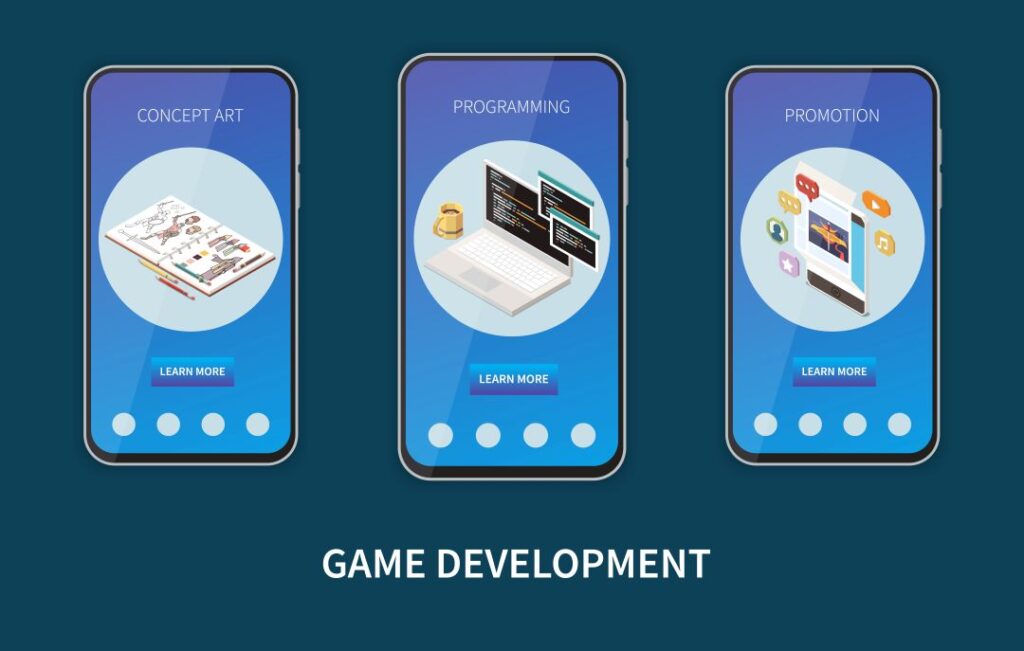
1. Why is user feedback so important in mobile game development?
User feedback reveals real-world insights into how players interact with your game, helping you identify and fix issues to improve player satisfaction and retention.
2. How can game development services in India help with optimization?
These services often include expert teams skilled in testing, cross-platform development, and performance optimization, ensuring your game runs smoothly on diverse devices.
3. What’s the best way to monetize a mobile game?
The best approach combines non-intrusive ads with optional in-app purchases, focusing on enhancing the user experience rather than disrupting it.
Mobile game design requires a delicate balance of creativity, technical execution, and player focus. By avoiding common mistakes like neglecting UX, overcomplicating gameplay, or poor optimization, you can create a game that resonates with players and stands out in a competitive market.
Partnering with reliable game development services in India can also provide the expertise needed to bring your vision to life while ensuring a seamless player experience. Embrace feedback, iterate often, and always prioritize your players.
How AI Can Help You Save Money in Your Business

Artificial intelligence (AI) is no longer a futuristic concept; it’s a present-day tool that can revolutionize your business operations while significantly reducing costs. From streamlining processes to optimizing app design and development, AI is making it easier for businesses to save money while enhancing efficiency. In this professional guide, we explore five key areas where AI can help you cut costs and maximize profits.
Repetitive tasks often consume valuable time and resources, leading to increased operational costs. AI-powered automation tools can take over these tasks, allowing employees to focus on more strategic initiatives.
How Automation Saves Money
- Reduced Labor Costs: AI bots handle tasks like data entry, scheduling, and customer support with minimal human intervention.
- Increased Accuracy: Automation reduces human errors, which can be costly to rectify.
- Improved Speed: Tasks that once took hours can now be completed in minutes, enhancing overall productivity.
For example, AI-driven tools in app design and development automate coding tasks, allowing developers to create apps faster and more efficiently.
Marketing is essential for growth but often consumes a significant portion of the budget. AI can help you optimize marketing campaigns, ensuring you get maximum ROI.
AI-Driven Marketing Insights
- Targeted Campaigns: AI analyzes customer behavior to identify specific audience segments and tailor campaigns accordingly.
- Dynamic Pricing: Machine learning algorithms adjust prices in real-time based on market trends and demand.
- Content Personalization: AI tools create personalized recommendations, emails, and ads, increasing conversion rates.
Using AI in app design and development, businesses can implement predictive analytics to create apps that cater to user preferences, reducing the cost of ineffective features.
Developing custom apps is often costly and time-consuming, but AI is changing the game by streamlining the process.
AI in App Development
- Prototyping and Testing: AI tools quickly generate prototypes and simulate user interactions, reducing the need for extensive testing.
- Code Generation: Machine learning models assist developers by generating code snippets, speeding up development.
- Bug Detection: AI identifies potential issues during development, preventing costly post-launch fixes.
By integrating AI into app design and development workflows, businesses save time and resources while ensuring higher-quality apps.
Customer support is a vital part of any business, but it can also be a significant expense. AI-powered solutions offer cost-effective ways to improve customer interactions.
AI-Powered Support Tools
- Chatbots: These virtual assistants provide 24/7 support, resolving common queries without human involvement.
- Sentiment Analysis: AI tools analyze customer feedback to identify areas for improvement, enhancing satisfaction and retention.
- Workflow Automation: AI routes complex queries to appropriate departments, reducing response times.
Implementing AI in customer support not only saves money but also improves the customer experience, fostering loyalty and repeat business.

AI tools can transform how businesses handle their finances, helping them identify cost-saving opportunities and make smarter decisions.
Financial Benefits of AI
- Expense Tracking: AI-powered software categorizes and analyzes expenses, identifying areas where costs can be reduced.
- Fraud Detection: Machine learning algorithms monitor transactions for unusual patterns, preventing financial losses.
- Forecasting: AI predicts cash flow and market trends, enabling better financial planning.
For businesses involved in app design and development, AI-driven project management tools track budgets in real time, ensuring projects stay within financial limits.
1. Can small businesses afford AI solutions?
Yes, many AI tools are affordable and scalable, making them accessible to small businesses.
2. How does AI benefit app design and development?
AI speeds up development, enhances testing, and ensures apps align with user needs, reducing overall costs.
3. What industries can benefit most from AI cost-saving strategies?
Industries like retail, healthcare, finance, and IT can see significant savings by adopting AI.
AI offers a multitude of ways to save money while improving efficiency across various business functions. From automating tasks to optimizing app design and development, its potential is limitless. By embracing AI solutions, businesses can not only reduce costs but also stay competitive in a rapidly evolving marketplace.
The Top 5 Mistakes First-Timers Make in Website Development
Building your first website can be an exciting but overwhelming experience. While modern website development solutions have simplified many aspects of the process, first-timers often fall into common traps that can derail their efforts. To help you navigate this journey successfully, we’ve outlined the top five mistakes beginners make and how to avoid them.

Why Planning Matters
Jumping straight into website development without a plan is one of the most common mistakes. It’s easy to get carried away with design ideas and features, but skipping the planning stage can lead to confusion and inefficiency later.
The Right Approach
Before writing a single line of code or selecting a template, outline the purpose of your website. Ask yourself:
- Who is my target audience?
- What actions do I want visitors to take?
- What key features does my site need?
Create a sitemap to visualize the structure and user flow. This roadmap will save you time and ensure your website meets your goals.
Transition to the Next Step
Once your plan is in place, you’ll have a clearer direction, reducing the risk of aimless trial and error.
The Pitfall of Overcomplicated or Inadequate Tools
Many beginners struggle to pick the right tools for their website. They either opt for overly complicated platforms or ones that lack the necessary features, causing frustration and wasted effort.
Modern Website Development Solutions to the Rescue
Popular tools like WordPress, Wix, and Squarespace offer user-friendly interfaces and robust features for beginners. For those with coding knowledge, frameworks like React or Bootstrap can be game changers. Evaluate your skill level and project needs before deciding on a tool.
Transition to Building Your Website
Choosing the right tools will set the foundation for a smoother development process.
The Problem with Feature Creep
Another mistake is cramming too many features into your website. From flashy animations to unnecessary plugins, beginners often believe that more is better. In reality, a cluttered website confuses users and slows down loading times.
How to Keep It Simple
Focus on the essentials:
- Ensure intuitive navigation.
- Highlight core functions, such as a contact form or e-commerce capabilities.
- Avoid large files or excessive widgets that can drag down performance.
Remember, simplicity enhances user experience. A clean, streamlined website is far more effective than a crowded one.
Transition to Optimization
Simplifying your site makes it easier to optimize for speed and functionality.

Why Mobile Compatibility is Crucial
With mobile traffic surpassing desktop usage, neglecting responsive design is a major oversight. A site that looks great on a desktop but breaks on smaller screens will alienate a significant portion of your audience.
Modern Website Development Solutions for Responsiveness
Most website builders and frameworks now offer responsive design tools. Test your site on multiple devices and screen sizes to ensure it adapts seamlessly. Tools like Google’s mobile-friendly test can help identify issues.
Transition to Audience Engagement
By prioritizing responsive design, you’ll ensure that your site appeals to users on any device, boosting engagement and credibility.
The Cost of Ignoring SEO
Search engine optimization (SEO) is often an afterthought for beginners. However, without proper SEO practices, your website may struggle to attract visitors.
Getting SEO Right
Start with these basics:
- Use descriptive, keyword-rich titles and meta descriptions.
- Optimize images with alt text.
- Ensure fast loading times and mobile responsiveness.
Leverage modern website development solutions like Yoast SEO for WordPress or built-in SEO tools on platforms like Wix. These solutions simplify the process and help improve your site’s search engine ranking.
Transition to Ongoing Improvement
Making SEO a priority from day one sets your website up for long-term success.
1. What is the easiest platform for building a website?
Platforms like Wix and Squarespace are beginner-friendly, offering drag-and-drop functionality and pre-designed templates.
2. How do I choose a domain name?
Pick a name that’s short, memorable, and relevant to your website’s purpose. Avoid hyphens and numbers for simplicity.
3. How can I improve my website’s speed?
Optimize images, use caching tools, and minimize unnecessary plugins. Modern website development solutions often include built-in speed optimization features.
4. Do I need coding skills to build a website?
Not necessarily. Many website builders require no coding knowledge. However, basic HTML and CSS skills can be helpful.
5. How do I ensure my website is secure?
Use HTTPS, keep your tools updated, and consider adding security plugins or features provided by your hosting provider.
Avoiding these common mistakes will make your website development journey smoother and more rewarding. With proper planning, the right tools, and attention to simplicity, responsiveness, and SEO, you can create a website that stands out and serves its purpose effectively.
5 Ways CRM Can Solve Your Customer Service Problems
Customer service is the backbone of any successful business. In today’s fast-paced world, meeting customer expectations has never been more challenging. Fortunately, Customer Relationship Management (CRM) systems can help streamline your processes and create positive experiences for your clients. Let’s explore five ways CRM can solve your customer service problems and improve overall satisfaction.

How Centralization Enhances Efficiency
One of the main challenges in customer service is fragmented customer information. CRM and ERP solutions provide a unified platform where all customer data is stored, including contact details, purchase history, and previous interactions.
By centralizing this information, your team can:
- Quickly access customer profiles.
- Provide personalized support.
- Avoid repetitive questions that frustrate customers.
For example, when a customer calls with a complaint, the representative can immediately pull up their profile to understand the issue and provide a tailored solution. This eliminates delays and ensures a seamless experience.
Breaking Silos with CRM Systems
Effective customer service requires seamless collaboration between departments. A CRM system acts as a bridge, enabling teams like sales, marketing, and support to share information effortlessly.
Here’s how this works:
- CRM tools allow real-time updates on customer interactions.
- Notes and case histories are visible to all relevant teams.
- Automated alerts ensure follow-ups are never missed.
For instance, if a sales representative promises a discount during a call, the support team will know about it and can address customer queries accordingly. This coordination reduces miscommunication and builds trust with your clients.

Save Time and Focus on What Matters
Time-consuming administrative tasks can take your team’s focus away from delivering excellent service. CRM systems include automation features that handle routine activities such as:
- Sending follow-up emails.
- Assigning tickets to the right team members.
- Tracking service requests and updating statuses.
This not only saves time but also ensures consistency. For example, automated ticket assignment can route high-priority issues to experienced agents, improving response times and customer satisfaction.
Using Data to Anticipate Customer Needs
Understanding your customers better is key to solving their problems efficiently. CRM and ERP solutions provide powerful analytics tools that help you:
- Track customer behavior and preferences.
- Identify common pain points.
- Measure the effectiveness of your support strategies.
With these insights, you can make data-driven decisions to improve your service. For instance, analytics might reveal that most complaints occur after a product update. This knowledge allows you to proactively address issues before they escalate, reducing complaints and improving user satisfaction.
Anticipating Problems Before They Arise
CRM systems enable proactive customer service by allowing you to anticipate and address issues before customers even contact you. Features like predictive analytics and automated reminders help you stay ahead.
Examples include:
- Sending maintenance reminders for products.
- Offering discounts on upcoming renewals.
- Notifying customers about potential delays or outages.
Proactive engagement shows that you care about your customers’ needs, which enhances loyalty and reduces churn rates.

Frequently Asked Questions About CRM and Customer Service
- What is the difference between CRM and ERP solutions? CRM focuses on customer relationships, while ERP handles overall business processes like inventory, accounting, and supply chain management. Together, they provide a comprehensive view of your business operations.
- Can small businesses benefit from a CRM system? Absolutely! Small businesses can use CRM tools to streamline operations, enhance customer interactions, and scale their service without needing large teams.
- How can I choose the right CRM for my business? Look for features like ease of use, integration with existing tools, scalability, and customer support options. Many CRMs also offer free trials, so you can test them before committing.
- Is CRM expensive? Costs vary, but there are affordable options, including free versions for small teams. The investment often pays off in improved efficiency and customer satisfaction.
- How long does it take to implement a CRM? Implementation time depends on the complexity of your business and the CRM system. Simple setups can take a few days, while larger businesses may need weeks.
How to Update Old Blog Posts for Better SEO Results

Keeping your blog posts updated is one of the best strategies to ensure your content stays relevant and continues to drive traffic to your website. By improving older posts, you can attract new readers, boost rankings, and maximize the value of your content. This beginner-friendly guide will walk you through actionable steps to update old blog posts for better SEO results.
Old blog posts often lose their ranking power over time due to outdated information, changes in search algorithms, or increased competition. Refreshing these posts gives them new life, allowing you to:
- Improve rankings on search engine results pages (SERPs).
- Provide accurate and updated information to your audience.
- Increase organic traffic with minimal effort compared to creating new content.
Before diving into updates, determine which posts to focus on. Here are some tips:
- Use Analytics Tools: Check your website analytics to identify posts with declining traffic or high impressions but low clicks.
- Focus on Evergreen Content: prioritize posts with timeless topics that can remain relevant with minor updates.
- Check Rankings: Target posts that rank on the second or third page of Google; small tweaks can push them higher.
Pro Tip: If your blog is connected to marketing services, prioritize posts related to your core offerings for better lead generation.
Search engines value fresh and accurate content. Follow these steps to refresh your blog:
- Update Data and Statistics: Replace outdated data with current figures from trusted sources.
- Revise Outdated Examples: Use modern references that resonate with today’s audience.
- Expand Content: Add new insights, case studies, or FAQs to increase value.
Keyword optimization is crucial for SEO success. Here’s how to optimize:
- Research Keywords: Use tools like Google Keyword Planner to identify new and relevant keywords.
- Include Long-Tail Keywords: These are often easier to rank for and cater to specific queries.
- Avoid Keyword Stuffing: Ensure natural keyword placement in headings, subheadings, and content.
A good user experience (UX) ensures readers stay on your page longer, which positively impacts SEO. To improve UX:
- Improve Readability: Use short paragraphs, bullet points, and headings.
- Add Visuals: High-quality images, infographics, and videos can break up text and engage readers.
- Fix Broken Links: Check for and replace any outdated or non-functioning links.
Metadata and internal linking can significantly improve your blog’s SEO performance.
- Rewrite Meta Descriptions: Create compelling and keyword-rich descriptions under 160 characters.
- Revise Titles: Use attention-grabbing titles with updated keywords.
- Add Internal Links: Link to newer content or related posts to guide readers and improve site navigation.

Once you’ve updated your blog post, let your audience know:
- Share on Social Media: Post updates on platforms like LinkedIn, Twitter, and Facebook.
- Send a Newsletter: Inform your subscribers about the refreshed content.
- Collaborate with Influencers: Ask industry influencers to share your content if relevant.
1. How often should I update old blog posts?
Aim to review and update high-performing posts at least once a year or whenever there’s significant industry news.
2. Can updating old posts improve rankings immediately?
While results vary, many posts see improvements within weeks of updating, especially when combined with good promotion strategies.
3. Should I update low-performing posts?
Yes, but focus on posts with potential, such as those with moderate traffic or relevance to your audience.





